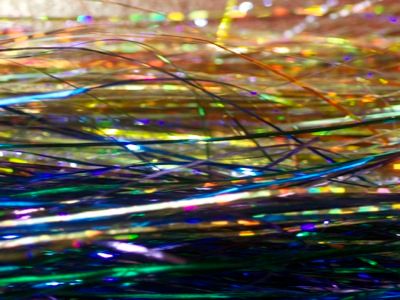From small stillwaters to wild lakes, the Diawl Bach is a deadly little all rounder. Here are our top fly fishing and tying tips for this excellent, easy to tie nymph pattern.
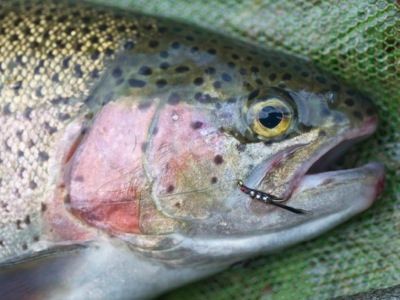
A go to pattern in so many fly boxes, the Diawl Bach must take its place as one of the best stillwater flies of all time. It might look skinny and modest in the palm of your hand, but there is something both brown and rainbow trout find irresistible about this fly.
The pattern has its roots in Wales (the name means “Little Devil”), where the original was a busier, more traditional looking fly to the version most of us know today. Traditionalists may sigh, but the slimmer, modern Diawl Bach has well and truly earned its place as a top fly for lakes of all kinds, from small trout lakes to the giant reservoirs.
Devilishly Simple
One of the key strengths of the Diawl Bach must surely be its simplicity. With a sparse design and only a few key materials, this leads to infinite variations. At Turrall, our range includes several Diawl Bach variants that you’ll find useful, or can easily try tying yourself (see our step-by-step fly tying sequence “How to tie a Diawl Bach” at the end of the blog for see for yourself!)
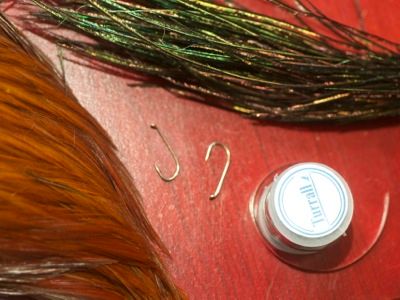
The basic Diawl Bach is simply a sparse, peacock bodied fly with a tinsel rib- an excellent all-rounder. But alternatives worth looking out for include our red ribbed and UV versions. UV-reflective materials certainly give an edge to flies , coming into their own when light levels are low (see our blog on tying with UV materials). The red variant is nice, visible option where you find less than clear water or algal blooms.
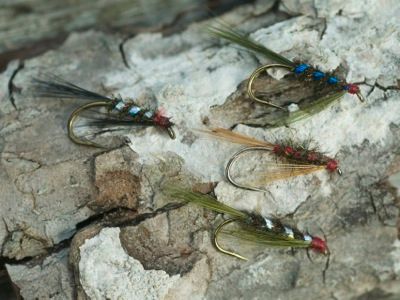
Of course, you can always mix and match with colours. Bachs can be fished singly, but are quite often fished in a team of three or even four nymphs. Try different versions of the fly on the same leader to see which the fish prefer.
How to fish a Daiwl Bach
For many stillwater trout fisheries, Diawl Bachs can be fished in a similar style to buzzers, with only a very gentle retrieve. The leader and end of the fly line should be watched carefully for takes that may only be a slight draw.
The Bach might be most heavily associated with reservoir fly fishing and rainbow trout, but this is also highly underused fly on lochs and wild lakes for brown trout. If the fishing is tough, or there is little wind, a Diawl Bach on the point presents a subtler target for less aggressive fish.
Another key area when fishing the Diawl Bach is the end of the retrieve. Never rush to bring the flies out of the water, but make a slow steady lift, by gradually lifting the rod as you bring the last few feet of fly line in. This can take twenty seconds or more and the ascending motion will quite often bring a late take if you get it right.
How to tie the Red Daiwl Bach: a step by step guide
Even if you’re only just beginning fly tying, the Diawl Bach is a fly that shouldn’t pose too many problems. With just three materials other than the hook and thread typically, it is one of those easy to tie fishing flies that is reassuringly simple to master.
For our step by step, however, we will tie a red-ribbed variant that is useful for coloured water.
Hook: Standard or heavy nymph, size 10-16
Thread: Red, fine
Tail & throat: Red game fibres
Rib: Red Turrall Multiflash
Body: Peacock Herl
Step 1: Fix your hook in the vice and run on some thread in neat turns, stopping just before it reaches above the barb.
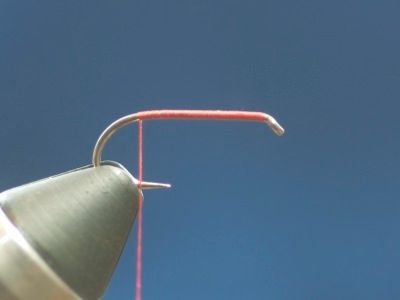
Step 2: Select a little pinch of red cock fibres for the tail. The tail length is a matter of taste, but I like about half the length of the hook. It is best tying the feather fibres in right along the hook shank, as shown, to get an even body.

Step 3: Run plenty of turns of thread evenly up the hook to bind the tail materials down securely. Once you reach near the eye, catch in your rib material and bind this in place and start to return the thread towards the tail again:

Step 4: Once you're at tail, you can then attach your body material, a single strand of peacock herl. Again, this is best bound into place by tying evenly right along the hook to get a nice even body. Stop when you get about 2-3mm from the eye of the hook:
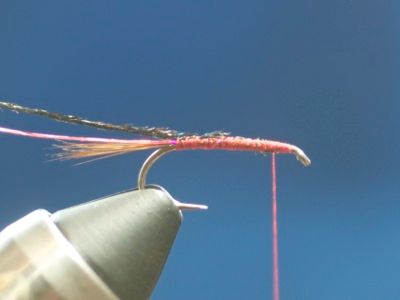
Step 5: Wind the peacock up the hook in close turns to make an even body, before securing with a couple of turns of thread.
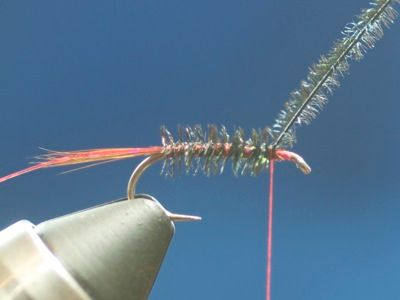
Step 6: Now the rib can follow. Wind the tinsel round in nice even, open turns, taking care to keep plenty of the little peacock spikes exposed. Again, secure at the head with a couple of turns of thread.
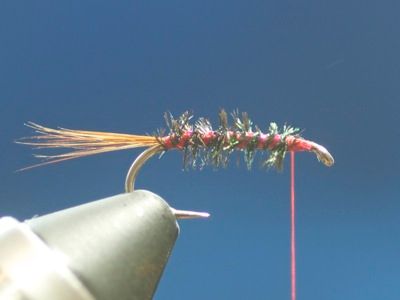
Step 7: The next part of the fly (tying in the throat hackle) is easiest with the hook upside down. With a rotary vice this is easy- but for more basic models you can carefully open the jaws and turn the fly over.
Now take a little pinch of red cock fibres and measure up, before pinching and tying in place securely.

Step 8: Flip the fly over and all that remains is to whip finish, trim the thread and add a spot of varnish.
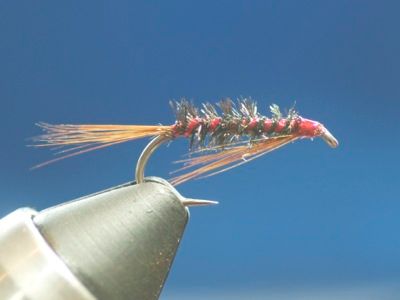
Final tips and tweaks...
- If you're getting an uneven or thick fly, try a thinner thread. This way you can get more turns in without bulking things up too much.
- A standard nymph hook works fine, but it can also be worth experimenting with heavy nymph hooks for faster sinking flies- or indeed an emerger hook for fishing just under the surface.
-Do also check out our Facebook page for more news, flies and tips, while you'll find our excellent range of fly fishing materials and accessories, as well as our various Diawl Bach variants, at your nearest Turrall stockist or online fly tying shop. For your ribs, our UV materials are brilliant, while Turrall Multi-flash gives you several different colours in one pack:
